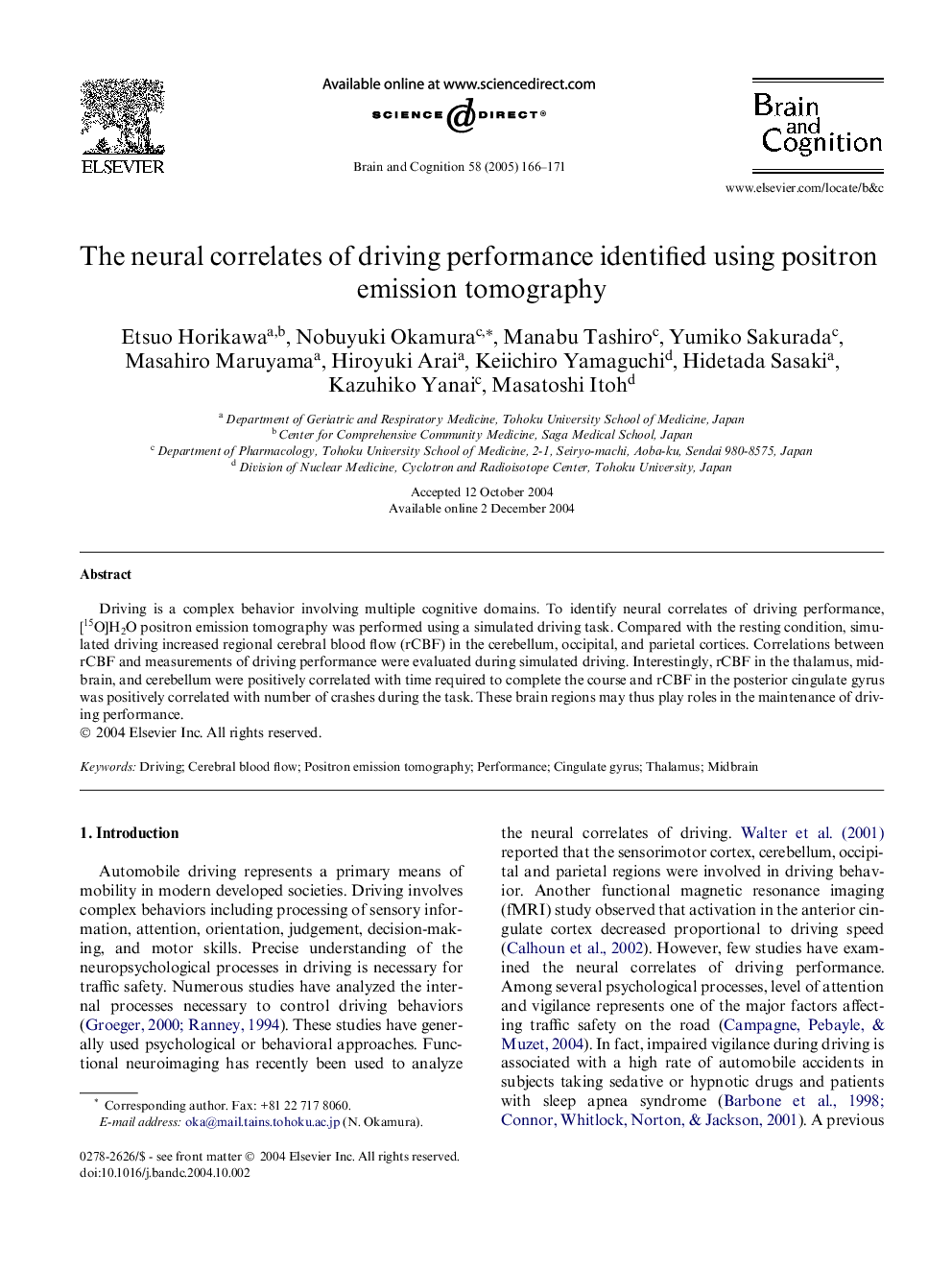| Article ID | Journal | Published Year | Pages | File Type |
|---|---|---|---|---|
| 10456243 | Brain and Cognition | 2005 | 6 Pages |
Abstract
Driving is a complex behavior involving multiple cognitive domains. To identify neural correlates of driving performance, [15O]H2O positron emission tomography was performed using a simulated driving task. Compared with the resting condition, simulated driving increased regional cerebral blood flow (rCBF) in the cerebellum, occipital, and parietal cortices. Correlations between rCBF and measurements of driving performance were evaluated during simulated driving. Interestingly, rCBF in the thalamus, midbrain, and cerebellum were positively correlated with time required to complete the course and rCBF in the posterior cingulate gyrus was positively correlated with number of crashes during the task. These brain regions may thus play roles in the maintenance of driving performance.
Keywords
Related Topics
Life Sciences
Neuroscience
Cognitive Neuroscience
Authors
Etsuo Horikawa, Nobuyuki Okamura, Manabu Tashiro, Yumiko Sakurada, Masahiro Maruyama, Hiroyuki Arai, Keiichiro Yamaguchi, Hidetada Sasaki, Kazuhiko Yanai, Masatoshi Itoh,
